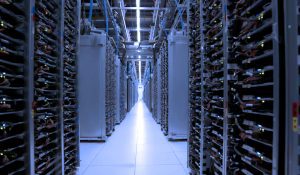To ensure the reliability of mission-critical applications in industry and infrastructure, organizations are tapping some of the same type of technologies used to protect data centers and information technology (IT) assets. However, it’s important to understand that successfully protecting mission-critical, non-IT equipment takes more than just data center or traditional IT expertise.
The point is, properly designing, implementing, and operating Secure Power systems is a challenge that spans multiple domains of expertise. By Secure Power, we mean the protection of mission-critical non-IT equipment such as manufacturing production equipment, industrial process automation systems, treatment systems in water utility plants, specialized systems found in airports, or healthcare equipment such as imaging systems in hospitals.
Today, much of the equipment found in industry and infrastructure is digitized, meaning it has a crucial IT component, but it’s not traditional IT gear that sits within the confines of a data center. Instead, this critical equipment is found on plant floors, within transit systems, or in remote locations such as ships or offshore oil rigs. This equipment may need to integrate with systems for industrial automation management, fit into a well-designed electrical architecture capable of withstanding harsh conditions, and interface as needed with systems for building management and security. In essence, Secure Power applications are multi-disciplinary, a challenge that begs for a solution provider who has an abundance of expertise and product knowledge in each of these domains.
At Schneider Electric, we see Secure Power as crossing five domains of expertise. These are:
- Power Management, including power distribution, power quality, and reliability, protection and monitoring capabilities to enable efficient, safe and reliable electrical power.
- Process and machine management, including knowledge of industrial automation systems, human machine interface and supervisory control (HMI/SCADA), and systems for production management.
- IT room/data center management, including expertise and products for uninterruptible power supply (UPS), cooling, and data center infrastructure management (DCIM) software.
- Building management, including solutions that focus on reducing installation and operational costs while enhancing end-users’ comfort through real time temperature, lighting and shutter control.
- Security management, including expertise in access control, intrusion detection and video surveillance.
While not every Secure Power application will require deep knowledge of all domains, it’s quite possible that many of them will call for expertise in two or more of these domains. That’s why organizations should seek out a Secure Power solution provider who possesses expertise across all of them. For instance, providing highly reliable, Secure Power to an automated packaging line at a dairy plant would typically involve expertise in UPS solutions, but also would benefit from knowledge of industrial automation protocols, programmable logic controllers, and other plant automation systems that control the machinery and its communication with higher-level enterprise systems.
When you can combine deep expertise across all five of these domains with other factors such as vertical industry teams, global reach, strong channel partners, and knowledge of regulations, and of course, the right product options, then you have a well-rounded foundation for Secure Power solutions.
To find out more about the capabilities that Schneider Electric can bring to bear on Secure Power solutions for industry and infrastructure, contact your Schneider Electric representative, or explore this background online. Finally, look for an upcoming post which explores further questions involved with these multiple domains of expertise, such as how can we actually go about connecting the different domains, while also achieving integrated systems and a unified view of information.



Conversation
Very interesting indeed. What about a Pareto based approach?… like in this paper: https://www.mdpi.com/1996-1073/6/3/1439/pdf
Thanks for your comment Bogdan. Pareto is a very useful methodology that has broad coverage in many applications.